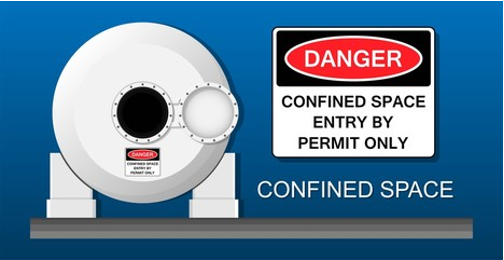
A Confined Space is defined by OSHA as a space that meets three types of criteria:
- The space is large enough to bodily enter to perform work.
- The space has a limited or restricted means of entry and exit.
- The space is not designed for continuous human occupancy.
If a space does not meet all three of these criteria, it is not considered a confined space.
Common examples of confined spaces include tanks, pits, boilers, vaults, shafts, chases, silos, manholes, and drains. If a confined space does not have any actual or potential hazards, it is considered a Non-Permit Required Confined Space.
Many types of confined spaces, however, can have the potential to present hazards to occupants inside of the space that pose a significant threat to life and health. If a confined space at UMBC has any of the following hazards, actual or potential, it is considered a Permit-Required Confined Space:
| ● Atmosphere | ● Engulfment | ● Entrapment | ● Electrical |
| ● Biological | ● Thermal | ● Asphyxiation | ● Mechanical |
UMBC personnel are not permitted to enter Permit-Required Confined Spaces unless the space can be reclassified to a non-permit required confined space. A space can be temporarily reclassified to non-permit required if the space does not have a hazardous atmosphere and if all other actual or potential hazards in the space can be eliminated prior to entry.
Contractors who will enter a permit-required confined space at UMBC are required to supply their own permit, equipment, and personnel to safely complete entry into the space, and must coordinate with the UMBC department with authority over the space prior to entering.
For more information on navigating confined spaces at UMBC, please review the Confined Space Entry Procedure. Contact ESH at 5-2918 or esh@umbc.edu if assistance is needed with identifying or classifying a confined space.